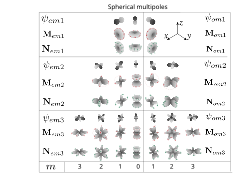Mie scattering
Mie scattering is the way that light scatters when it hits an object. It is named after the German physicist, Gustav Mie. This theory is good for all wavelengths of light, and all object sizes. If the object is much smaller than the wavelength of light, Rayleigh scattering theory is also quite good.
When the object is big, the light can hit many places on the object. A quite good formula for the scattering is:
- [math]\displaystyle{ Q = 2 - \frac{4}{p} \sin{p} + \frac{4}{p^2} (1-\cos{p}) }[/math]
Mie Scattering Media
Mie Scattering from a sphere. x is the wave number times the sphere's radius and m is the refractive index of the sphere divided by the refractive index of the medium.
The change of sky colour at sunset (red nearest the sun, blue furthest away) is caused by Rayleigh scattering by atmospheric gas particles, which are much smaller than the wavelengths of visible light. The grey/white colour of the clouds is caused by Mie scattering by water droplets, which are of a comparable size to the wavelengths of visible light.


